Your cart is currently empty!
#Hanfugirltravels: Journey to the wild (north) west [Part 2/2]
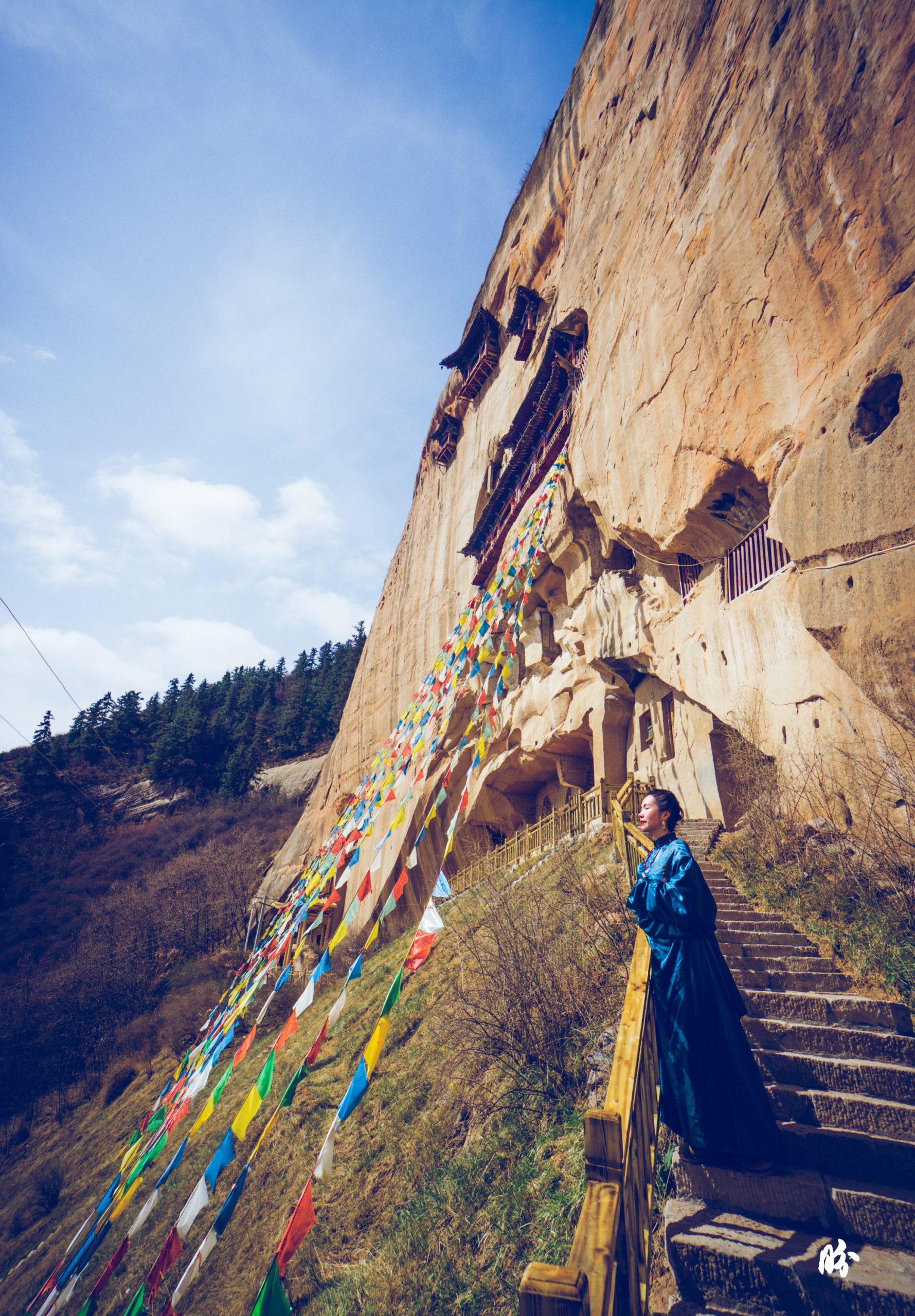
Day 4 & 5 DUNHUANG 敦煌
Dunhuang, the main reason why I took a trip to the wild northern and western part of China during this trip of a lifetime–I wanted to know more about the ancient silk road that connected China to the West.
It has got to be the most emotional and memorable place of the entire trip because of what it represented, and what still stands there today.
As long as over 2,000 years ago, in Han dynasty, the Chinese officially opened their gates to the Western world through this exact place and the route was henceforth known as the silk road. Back then, there were two main routes to get out of China and both were through great wall gate-passes located in Dunhuang. One is called Yang Guan (Sun pass), another is called Yu Men Guan (Jade gate pass).
Beyond these two gates, one would’ve been considered to have left China. There was a famous poem by Tang dynasty poet Wang Wei, who is also known as the “Buddha of poetry” that talked about the unbearable longing and melancholy he had towards the departure of a friend from the Sun pass.
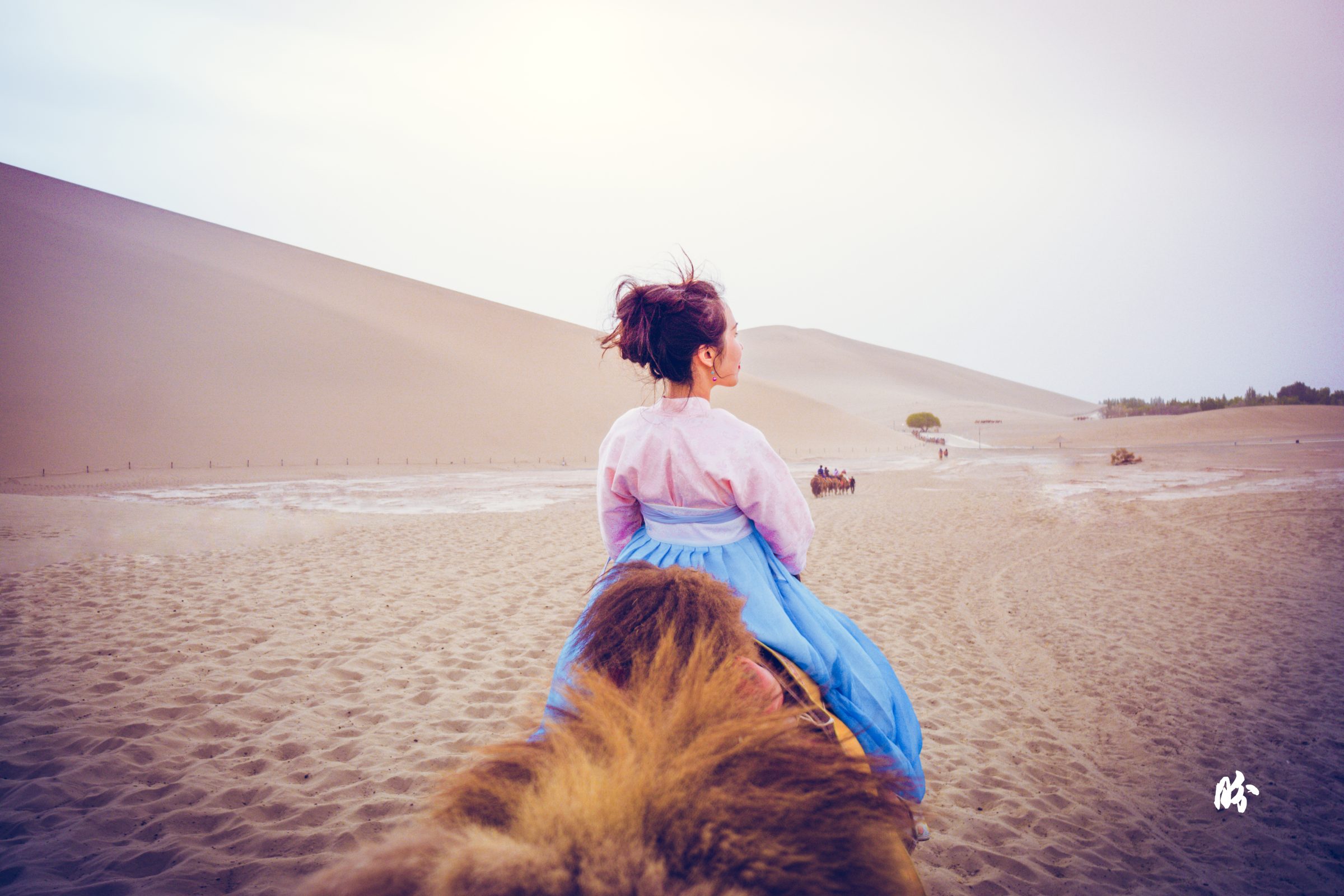
West beyond Yang Pass, no old friends you’ll see!
【渭城曲】(送元二使安西) 唐 • 王维
渭城朝雨浥輕塵,
客舍青青柳色新。
勸君更盡一杯酒,
西出陽關無故人。
WEI CHENG QU: “Song of Wei Town” (Farewell to Yuan Er on His Mission to Anxi)
— by WANG WEI (701-761)
— Translated by Frank C Yue
The morning rains cleanse light dusts off Wei town;
The inn and green willows put on fresh gown.
Of wine, won’t you drink one last cup with me?
West beyond Yang Pass, no old friends you’ll see!
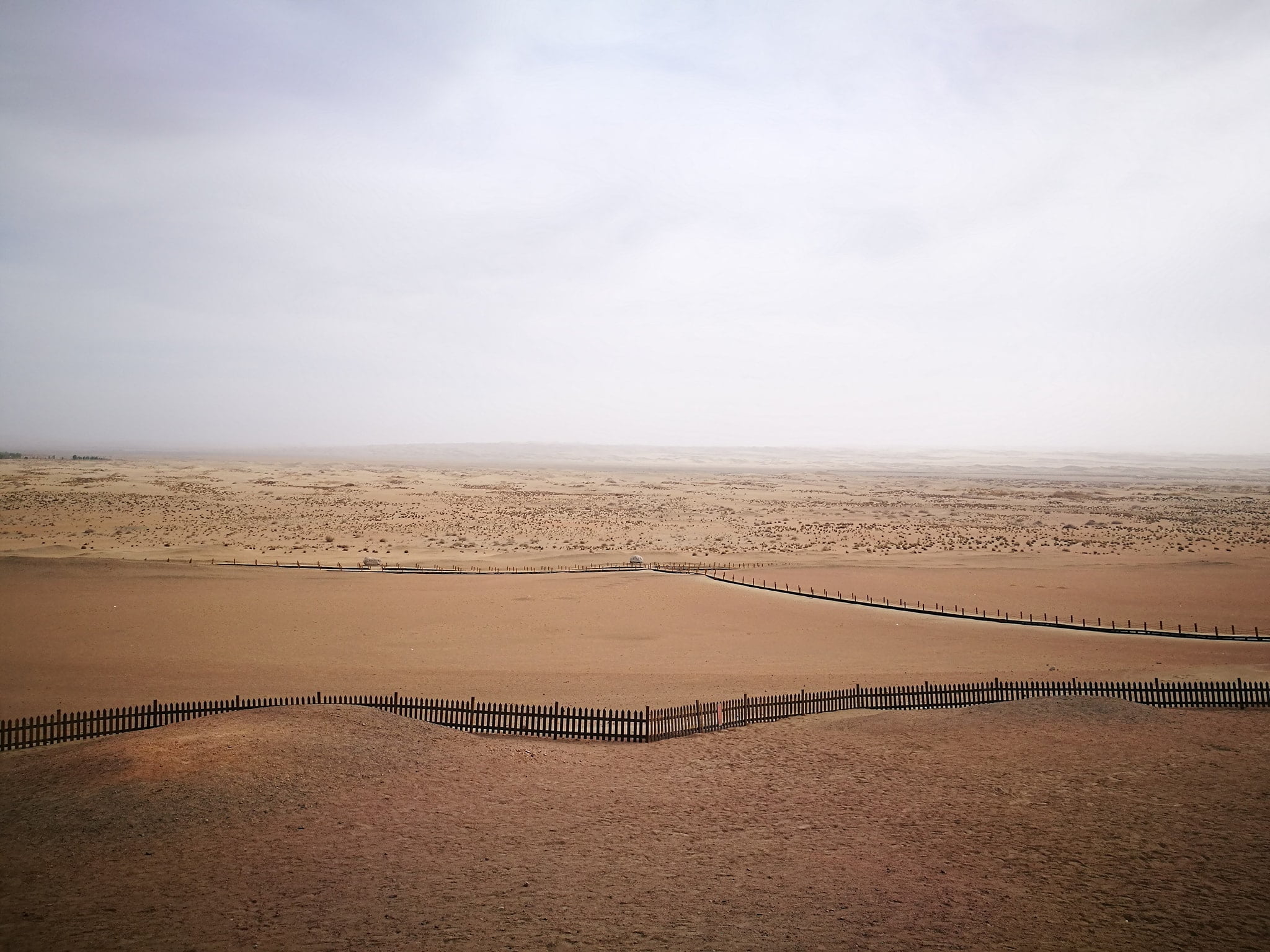
In the far distance, is a sand-covered area of the ancient settlement along the silk road, yet to be excavated. I can just imagine the amount of information that we could learn about the ancient world when we finally have enough resources to conserve and excavate them. The entire area was vast land of pretty much nothingness. I felt so tiny when confronted with such grandeur in nature and time, like one of the tiny grain of sand that made up this entire vast land.
Then, there’s Ming Sha Shan (Echo Sand Dune) and Yue Ya Quan (Crescent Lake) which I’ve written about in my instagram and Facebook posts, but for the benefit of those who didn’t see them, I’ll re-share them here. For those who’ve read it, please bear with me~
Mingsha Mountain (singing/echo sand sand dune/mountain) is located at the edge of Gobi desert at dunhuang. The sand mountain is famous for its flute-like sounds in the gale, thus its name Mingsha as “Singing Sand” in English. There are about 100 over such peculiar sand dunes in the world across continents, and 4 major ones in China (one of which is this one).
Accumulated by quicksand, it was extremely difficult to scale to high points because every 3 steps you take, you would slide back and sink in 2 steps. It was said that any foot prints left on the sand in Mingsha sand dune will almost certainly disappear over night. It’s probably due to the viscosity/fluidity of the sand (that being quicksand), because when we were climbing up we noticed that every step sends a tiny sand wave upwards (instead of downwards, abit counter intuitive). It’s fun to watch the sand move, never thought of sand reacting to us that way.
The fastest way to come down the sand dunes that rose up to 20-30m high was to roll down. I did it, so can you! The sand was super soft and fine, you could easily fall asleep there too!

Yueyaquan (Crescent lake) has been the spring of life at the edge of the Gobi Desert for thousands of years. In a travel record “Gobi Desert”, by British missionaries over a century ago, it was recorded as such: “All around us we saw tier on tier of lofty sand-hills, giving the lie to our quest, yet when, with a final desperate effort, we hoisted ourselves over the last ridge and looked down on what lay beyond, we saw the lake below, and its beauty was entrancing.”
Unfortunately due to global warming, the level of water has been in decline in recent years and the local government had to manually pump in water. The spring of life lived for thousands of years only to be killed and manually sustained by us in the recent years. Really quite sad to witness how our lives are affecting nature to such great extent everywhere we travel. From depleting snow on snow mountains and glaciers to dried up lakes.
The lake is just beside the pagoda in this picture on the bottom right.

And no trip is complete without a visit to the world renowned Mogao Caves. There are many caves that are similarly built in the Dunhuang area during the peak period when Buddhism flourished in China about two thousand years ago, and these caves collectively are known as Dunhuang Caves. The creation of the small grottoes across all these caves spanned over a thousand years or so. It is probably THE most priceless cultural artefact of China.
An interesting fact about The Mogao Caves–They were singled out by Jiang Qing as “spiritual opium” at the onset of Cultural Revolution but eventually escaped the entire episode of Cultural Revolution horror unscathed. This was all thanks to the specific instructions by the Chinese Premier then, Zhou Enlai, who signed document issued by the Central Government to protect everything at the Mogao Caves. The document and instructions arrived just before the many hot headed red guards arrived (their train journey took a while, thank goodness for bad public transport infrastructure then!).
So you know how important it was. They preserved many clues and records of lives about two thousand years ago, and a rich source of information for historians who study lives of people over a thousand years along the silk road. The story of Dunhuang Mogao Caves was an extremely emotional one, including the whereabouts of many of its cave paintings, sculptures and buddhist scriptures–they were scattered in France, Britain, Russia, Japan due to the lack of awareness by the Chinese Qing dynasty government at the start of the 20th century. After all, it’s been almost half a millennial since the caves along the ancient Silk Road have faded into obscurity due to the focus on Silk road of the Sea. By the end of Qing dynasty, the Qing government officials were so corrupted that when they finally became aware of the importance of the drawings and scriptures, ordered for the items to be sent to their own mansions, and tore many of the artefacts to be stored away undetected. Many of the scriptures and paintings were also lost along the way to Beijing, because they didn’t build proper carts to carry them.
I don’t have pictures for the place because I wanted to focus my entire attention on experiencing the place and learning its history. But if you are not a history buff, and just want to take pictures, I would recommend you skipping this place and go to Mati Si temple instead. It is to minimise carbon footprints and damage to the already badly deteriorated artefacts and paintings in Mogao Caves (that’s what the introductory video said too)–only visit it if you are really interested.
Practical information and tips: DO NOT EVER visit this place during peak season because you won’t get any ticket to go in as a foreigner. Tickets are sold online and at the door, but it is capped to daily limit. During peak season, all tickets would be snatched up by locals because foreigners can’t get them online and have to buy them in person with your passport at the door. And trust me, you will never win any queuing contest if you are up against the Chinese, even if they do have tickets available at the door.
And if you have one night at Dunhuang, do go and catch the immersive theatre Dunhuang, once more 又见敦煌. I cried 3 times.
Day 6 ZHANGYE 张掖
This place is known for its rainbow landscape. But in all honesty, I felt that it’s really nicer in pictures than in real life.
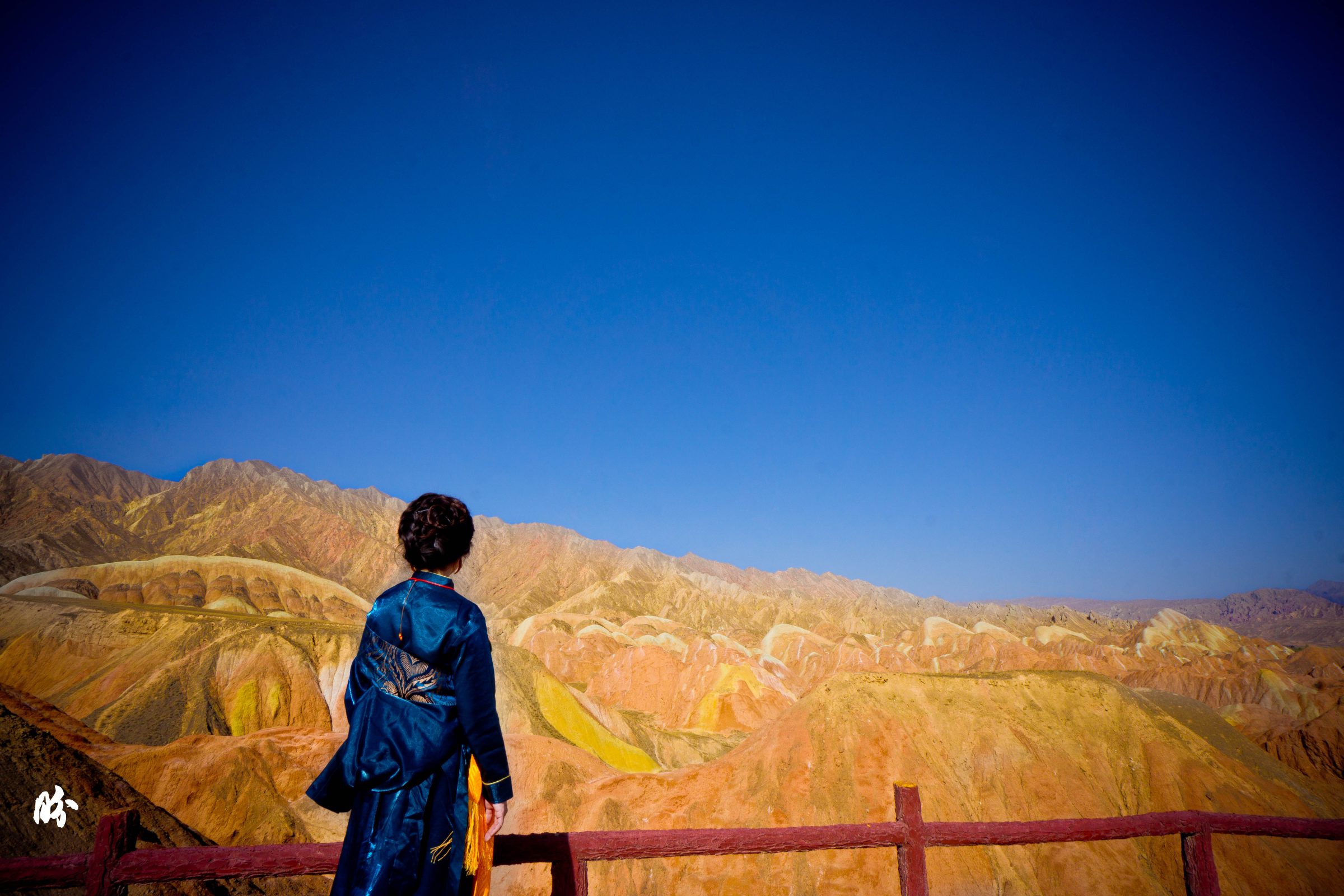
But I suppose, it’s always nice to see diverse landscape however disappointing they might be! It is still quite amazing, just I think I set my expectations too high!
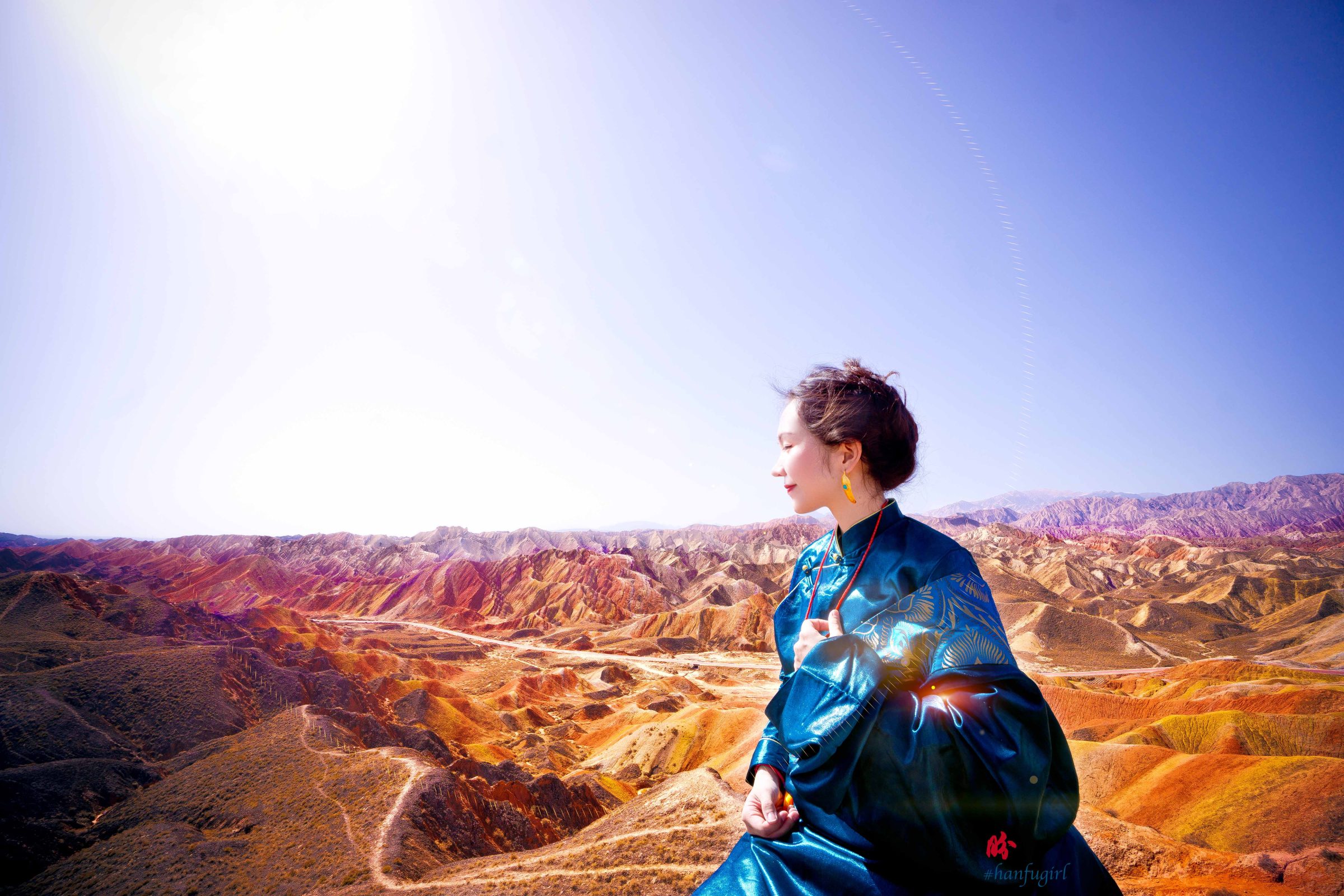
And just in case you are wondering, I wore Tibetan robe also because there’s this special ethnic group called the Yugur in the Zhangye area, and they have really interesting culture and ancestry. If you just look at them, you would think they’re Tibetan, or just slightly different from them. However, when I spoke to my Xinjiang friend a while back, she told me that they actually share similar ancestry as the Uyghurs of Xinjiang. While the Uyghurs of today have really sharp features like central asians, the Yugurs look more Mongolian/Tibetan. I would love to slowly learn more about their culture, but first I need to figure out the history of Central Asia!
Day 7 Mati Si 马蹄寺
Finally, the amazing Mati Si which I would definitely recommend you visiting. It has similar history as the Mogao Caves, and going back to as long as that period as well. Except that all the sculptures and paintings were destroyed during the Cultural Revolution, and the roofs and built-up structures were gone too. So everything you see there are later replacements, so not so much worries about leaving carbon footprints and damaging artefacts. But the caves and grottoes are real, and you get a chance to climb really narrow caves and steps, and get to see the raw grottoes and caves, which still have practiSing Tibetan buddhist monks and believers visiting and maintaining the place.

So, if you visit China during peak season when the natural landscape is the most beautiful, you should just skip Dunhuang and visit this place instead. At least you are guaranteed a visit!
And yes, I realise that living out of a suitcase (or two) for 3 months is really quite tiring. So forgive my shoddy post.
But do feel free to ask me if you need more information! I definitely recommend getting my guide who would drive you around and give you all the hacks to visiting the region! His Wechat ID is:18297005670/18997173393. He said that he could also get a translator if there’re non-Chinese-speaking visitors. He got us super good accommodation at Zhangye, for quite a steal! He has access to places that people don’t typically have, and contacts for accommodation for foreigners that are not typically open for individual bookings.
I’m trying to get him to organise a Tibet trip for us someday, since it is such a pain for foreigners at this point. So, fingers crossed!
2 responses to “#Hanfugirltravels: Journey to the wild (north) west [Part 2/2]”

Are there any geological museums around Zhangye where you can learn about the geology of the place?
Looking forward to your Tibet trip!

YES THERE IS!! There’s one RIGHT at the entrance of Zhangye! I.. didn’t get to go cos of time constraint and also cos.. i’m not really a geology person. But I think you might enjoy it! Tibet.. tough for foreigners.. i’ll try to figure out how!

Leave a Reply